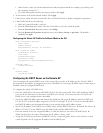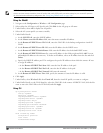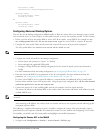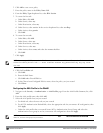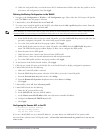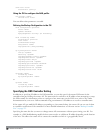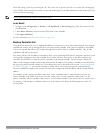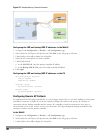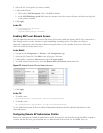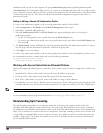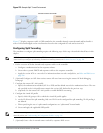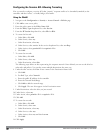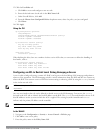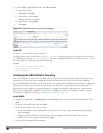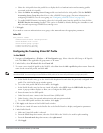
4. Select the AP system profile you want to modify.
5. Under Profile Details:
a. Click (select) LMS Preemption. This is disabled by default.
b. At the LMS Hold-down period field, enter the amount of time the remote AP must wait before moving back
to the primary controller.
6. Click Apply.
In the CLI
ap system-profile <profile>
lms-preemption
lms-hold-down period <seconds>
Enabling RAP Local Network Access
You can enable local network access between the clients (from same or different subnets and VLANs) connected to a
RAP through wired or wireless interfaces in split-tunnel/bridge forwarding modes. This allows the clients to
effectively communicate with each other without routing the traffic via the controller. You can use CLI or the
WebUI to enable the local network access.
In the WebUI
1. Navigate to the Configuration > Wireless > AP Configuration page.
2. Select the AP Group tab. Click Edit for the AP group or AP name.
3. Under Profiles, expand the AP menu, then select AP system profile.
4. To enable remote network access, select the Remote-AP Local Network Access check box.
Figure 172: Enable Remote AP Local Network Access
5. Click Apply.
In the CLI
l To enable, enter:
ap system-profile <ap-profile> rap-local-network-access
l To disable, enter:
ap system-profile <ap-profile> no rap-local-network-access
See the
Dell PowerConnect W-Series ArubaOS Command Line Reference Guide
for detailed information on the
command options.
Configuring Remote AP Authorization Profiles
Remote AP configurations include an authorization profile that specifies which profile settings should be assigned to
a remote AP that has been provisioned but not yet authenticated at the remote site. By default, these yet-
DellPowerConnectW-SeriesArubaOS6.2 | User Guide RemoteAccessPoints | 534



